Article No. 043025
Rigid mineral waterproofing grout with high resistance to sulphate
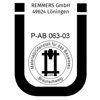
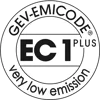

Product specifications
On delivery
The stated values represent typical product characteristics and are not to be construed as binding product specifications.
Field of application
- Subsequent waterproofing of basements from the interior
- Subsequent plinth waterproofing
- Waterproofing of reservoirs against inside water pressure
- Damp proofing for below ground waterproofing measures
- Building elements in contact with drinking water
- Salt-loaded substrates
- WW waterproofing slurry as per DIN 19573
Properties
- Very low emissions (GEV-EMICODE EC 1Plus)
- Water pressure tight
- High sulphate resistance and low active alkali content (SR/NA)
- Very good adhesion to the substrate
- Enables water vapour diffusion
- Chemical resistance according to DIN 4030 up to level of attack: XA2
-
Preparation
-
Substrate requirements
Mineral, stable, clean and dust-free.
Remove all traces of any non-mineral layers that impair adhesion (e.g. paints), gypsum-based plaster or mortar residue.Pre-wet highly absorbent substrates.
-
Preparations
Remove render and/or coatings at least 80 cm above the damaged area.
Finish the connecting area between the wall and floor in accordance with WTA Code of Practice 4-6 "Subsequent waterproofing of building elements with ground contact".
Break off or chamfer corners and edges.
Use a suitable mortar to form inner corners as sealing coves.
Salt inhibitor
Pre-treat salt-contaminated substrates with Sulfatex LQ and Salt IH.
Exterior priming:
Prime mineral substrates with Kiesol (1:1 with water)/Kiesol MB.
Interior priming:
Prime mineral substrates with Kiesol (1:1 in water).
Waterproofing in drinking water areas
Apply multiple layers of material to the prepared, pre-wetted substrate without priming.
-
-
Application
-
Apply at least two layers of the material.
Bonding layer before render application
Apply another slurry layer of the product and apply render wet-on-wet.
Alternative: apply a slurry layer of the product, throw on SP Prep, apply render once dry.
-
Application instructions
-
Do not use in direct sunlight.
The maximum total wet coat thickness must not exceed 5 mm.
Once it has hardened, mortar must not be made workable again by adding either water or more wet mortar.
Protect the fresh waterproofing layer from rain, direct sunlight, frost and condensation water.
Once dry, protect from mechanical damage.
Please contact Remmers Technical Service (phone +49 5432 83900) before applying with machine processing.
-
-
Working tools / cleaning
-
Mixer, ceiling brush, slurry broom
Clean tools with water while the material is still fresh.
-
Storage / shelf life
-
If stored in an unopened container and in a dry place, the product will keep for approx. 12 months.
-
Usage
-
Approx. 1.6 kg/m²/mm layer thickness
-
Application examples
-
* Apply in two layersWater impact classes (DIN 18533/18535)
Water impact (WTA Code of Practice 4-6)
Dry layer thickness (mm)
Application quantity of fresh mortar (kg/m²)
Powder application rate (kg/m²)
Yield 25 kg (m²)
W1-E* Ground moisture and non-pressing water
≥ 2 approx. 4.0 approx. 3.2 approx. 7.5
W2.1-E** Moderate impact of pressing water ≤ 3 m immersion depth ≥ 3 approx. 6.0 approx. 4.8
approx. 5.0
W3-E* Non-pressing water on earth-covered slabs ≥ 2 approx. 4.0 approx. 3.2
approx. 7.5 W4-E* Splashing water and ground moisture at the wall base, and capillary water in and under walls ≥ 2
approx. 4.0
approx. 3.2
approx. 7.5
W2-B** Water impact in tanks with a fill level ≤ 10 m ≥ 3
approx. 6.0
approx. 4.8 approx. 5.0
** Apply in three layers
-
-
General information
-
The mixing water must be of drinking water quality.
May contain traces of pyrite (iron sulphide).
Low chromate content in accordance with Directive 2003/53/EC.
Always set up a trial area/trial areas first.
The characteristic data of the product were calculated under laboratory conditions at 20°C and 65% relative humidity.
The relevant test certificates must be observed when planning and carrying out work.
Current regulations and legal requirements must be taken into account and deviations from these must be agreed separately.
Special agreements and certificates of suitability can be downloaded online at www.remmers.com.
-
-
Disposal instructions
-
Larger quantities of leftover product should be disposed of in the original containers in accordance with the applicable regulations. Completely empty, clean containers should be recycled. Do not dispose of together with household waste. Do not allow to enter the sewage system. Do not empty into drains.
-
-
Safety / regulations
-
For further information on the safety aspects of transporting, storing and handling the product and on disposal and environmental matters, please see the current Safety Data Sheet.
-




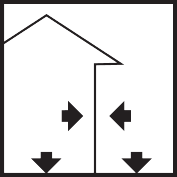
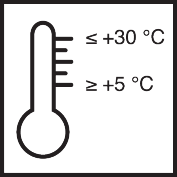

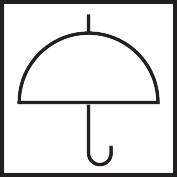








![WP Top [basic] WP Top [basic]](https://m.remmers.com/gebindeabbildungen/2400w/78767.png?w=100&version=1)




